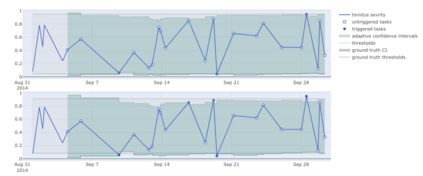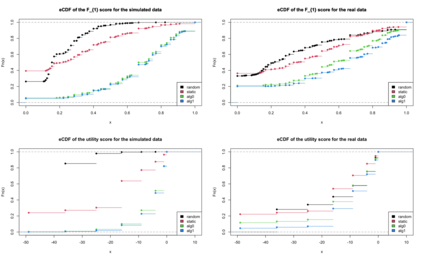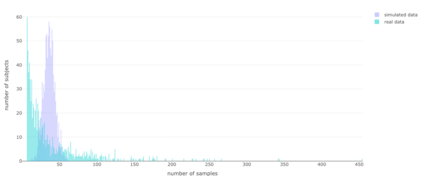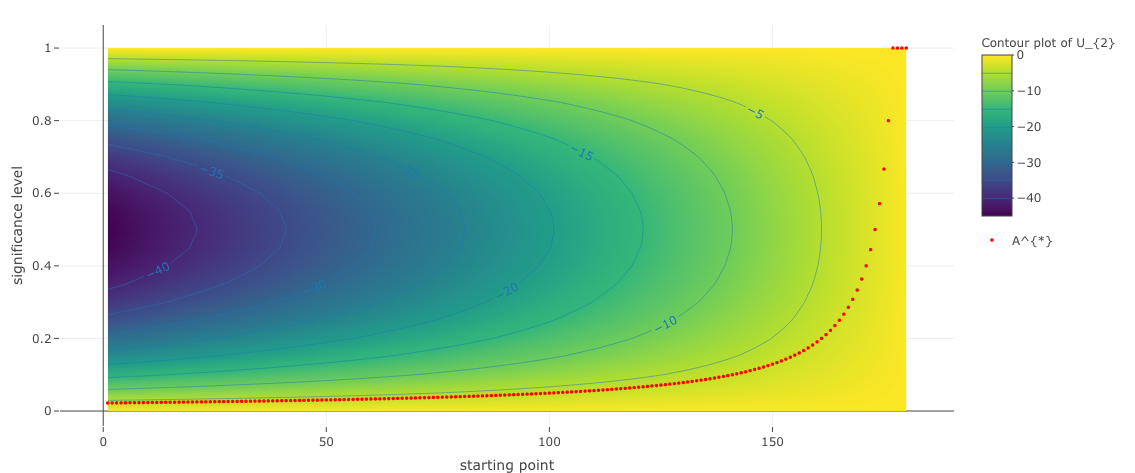Recently the use of mobile technologies in Ecological Momentary Assessments (EMA) and Interventions (EMI) has made it easier to collect data suitable for intra-individual variability studies in the medical field. Nevertheless, especially when self-reports are used during the data collection process, there are difficulties in balancing data quality and the burden placed on the subjects. In this paper, we address this problem for a specific EMA setting which aims to submit a demanding task to subjects at high/low values of a self-reported variable. We adopt a dynamic approach inspired by control chart methods and design optimization techniques to obtain an EMA triggering mechanism for data collection which takes into account both the individual variability of the self-reported variable and of the adherence rate. We test the algorithm in both a simulation setting and with real, large-scale data from a tinnitus longitudinal study. A Wilcoxon-Mann-Whitney Rank Sum Test shows that the algorithm tends to have both a higher F1 score and utility than a random schedule and a rule-based algorithm with static thresholds, which are the current state-of-the-art approaches. In conclusion, the algorithm is proven effective in balancing data quality and the burden placed on the participants, especially, as the analysis performed suggest, in studies where data collection is impacted by adherence.
翻译:最近,在生态动力评估和干预(EMI)中使用移动技术使收集适合医疗领域个人内部变异研究的数据更加容易,然而,特别是在数据收集过程中使用自我报告时,很难平衡数据质量和对主体造成的负担。在本文件中,我们处理在特定EMA设置问题上的这一问题,该设置旨在向自报变量的高值/低值对象提交高值/低值任务;我们采用了一种动态方法,在控制图表方法的启发下,设计优化技术,以获得数据收集的EMA触发机制,其中既考虑到自报变量的个别变异性,又考虑到遵守率的个别变异性。我们在模拟环境中测试算法,并用一个长视力研究中真实的大规模数据进行测试。 Wilcoxon-Man-Whitney Rang Sum测试显示,算法往往具有更高的F1分和实用性,而不是随机表和基于规则的定限值算法,这是当前最先进的方法。在结论中,在数据采集数据时,算法是有效的平衡数据质量和精确性分析。在分析中,结果显示,在分析中,在数据采集数据时,受影响的数据是有效的平衡。






